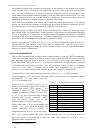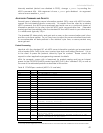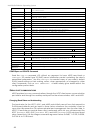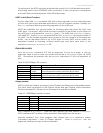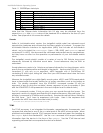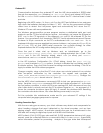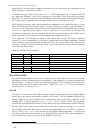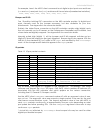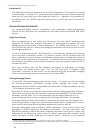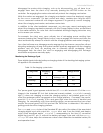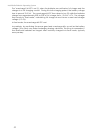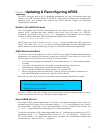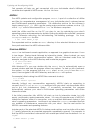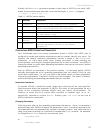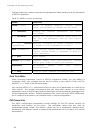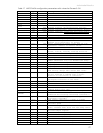
ActivMedia Robotics Operating System
Expansion I/O
Four alternative A/D ports appear at the 40-position Expansion I/O connector of the H8S
microcontroller.
24
Use the ADSEL client command number 35 to select and subsequently
have the A/D value from one of the alternative ports AN2-5 appear in the standard SIP.
The default port is AN0 (ADSEL argument value of zero), the A/D port also on the User I/O
connector.
DOCKING/CHARGING SYSTEM I/O
The docking/charging system’s mechanism and associated charge-management
circuitry on the robot may be controlled from the robot's H8-microcontroller and AROS
servers.
Digital Port Controls
When set digital high (1), the "inhibit" port OD4 on pin 10 of the User I/O connector (see
Appendix A) causes the charging mechanism to disengage and retract from the
charging platform and inhibits its future deployment. The "deploy" port OD5 pin 12, when
set high with port OD4 low, deploys the charging mechanism with full force to seat it onto
the charging platform.
25
At the fully deployed position, the mechanism is mechanically stabilized and requires
much less force to maintain contact. If in positive contact with the charger base, the
robot's onboard circuitry activates and thereafter maintains the actuated mechanism at
that lower force as long as it receives power. To minimize heat and eventual damage to
the actuator, the deploy line should be activated for only short periods; maximally for 10
seconds at a time.
Your client software may run the charging mechanism by individually activating/
deactivating the digital output ports, such as with the AROS COMdigout (#30)
command. However, for best results, we recommend using the automated charging
control commands and systems we provide with the latest AROS.
Docking/Charging Servers
To use AROS’ docking/charging system servers (version 1.7 or later), you must first enable
the H8-microcontroller's automated charger servers through your robot's FLASH
parameters. Use the AROScf configuration tool and set the Charger parameter value to
1 (0 to disable) and save the value.
Thereafter, for autonomous operation of the robot with the charging platform, establish a
client-server connection between an ARIA- or similar client-enabled PC and the robot's
controller. Use the AROS CHARGE command #68 with an integer argument of 1 to
automatically halt robot motion and deploy the docking mechanism. The docking
mechanism automatically retracts after five seconds if the robot does not engage with
the docking platform, during which time the robot's drive system is unresponsive. So your
client should wait at least that long before attempting to resume activity.
Although disengaged while recharging, AROS remembers if your robot's motors were
engaged just before deploying the docking mechanism. This way, your robot may
discontinue charging, retract the robot's charging mechanism, and go on its merry way
automatically by having the client send any motion command that normally would
cause the robot to drive away from its current position. However, if you purposely
24
Many other ports also appear at that connector, but are not yet supported in AROS.
25
These output ports and the charge-sensing User I/O-based digital input ports (see below) do not interfere with
the Pioneer/PeopleBot Gripper.
50



